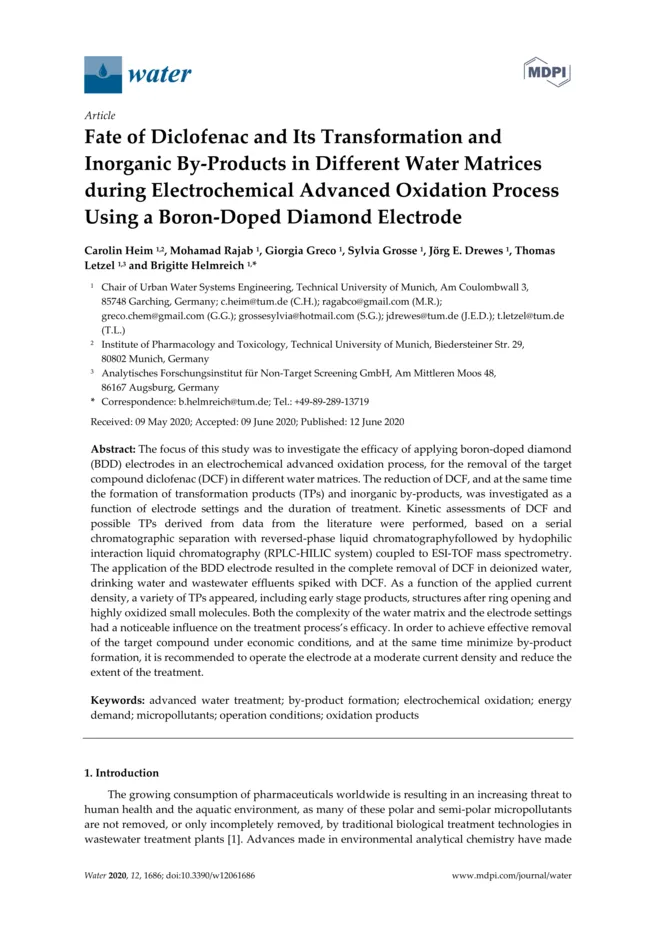The focus of this study was to investigate the efficacy of applying boron-doped diamond (BDD) electrodes in an electrochemical advanced oxidation process, for the removal of the target compound diclofenac (DCF) in different water matrices. The reduction of DCF, and at the same time the formation of transformation products (TPs) and inorganic by-products, was investigated as a function of electrode settings and the duration of treatment. Kinetic assessments of DCF and possible TPs derived from data from the literature were performed, based on a serial chromatographic separation with reversed-phase liquid chromatographyfollowed by hydophilic interaction liquid chromatography (RPLC-HILIC system) coupled to ESI-TOF mass spectrometry. The application of the BDD electrode resulted in the complete removal of DCF in deionized water, drinking water and wastewater effluents spiked with DCF. As a function of the applied current density, a variety of TPs appeared, including early stage products, structures after ring opening and highly oxidized small molecules. Both the complexity of the water matrix and the electrode settings had a noticeable influence on the treatment process’s efficacy. In order to achieve effective removal of the target compound under economic conditions, and at the same time minimize by-product formation, it is recommended to operate the electrode at a moderate current density and reduce the extent of the treatment.
Heim et al. 2020
Neuer Zeitschriftenbeitrag von Heim et al. 2020
